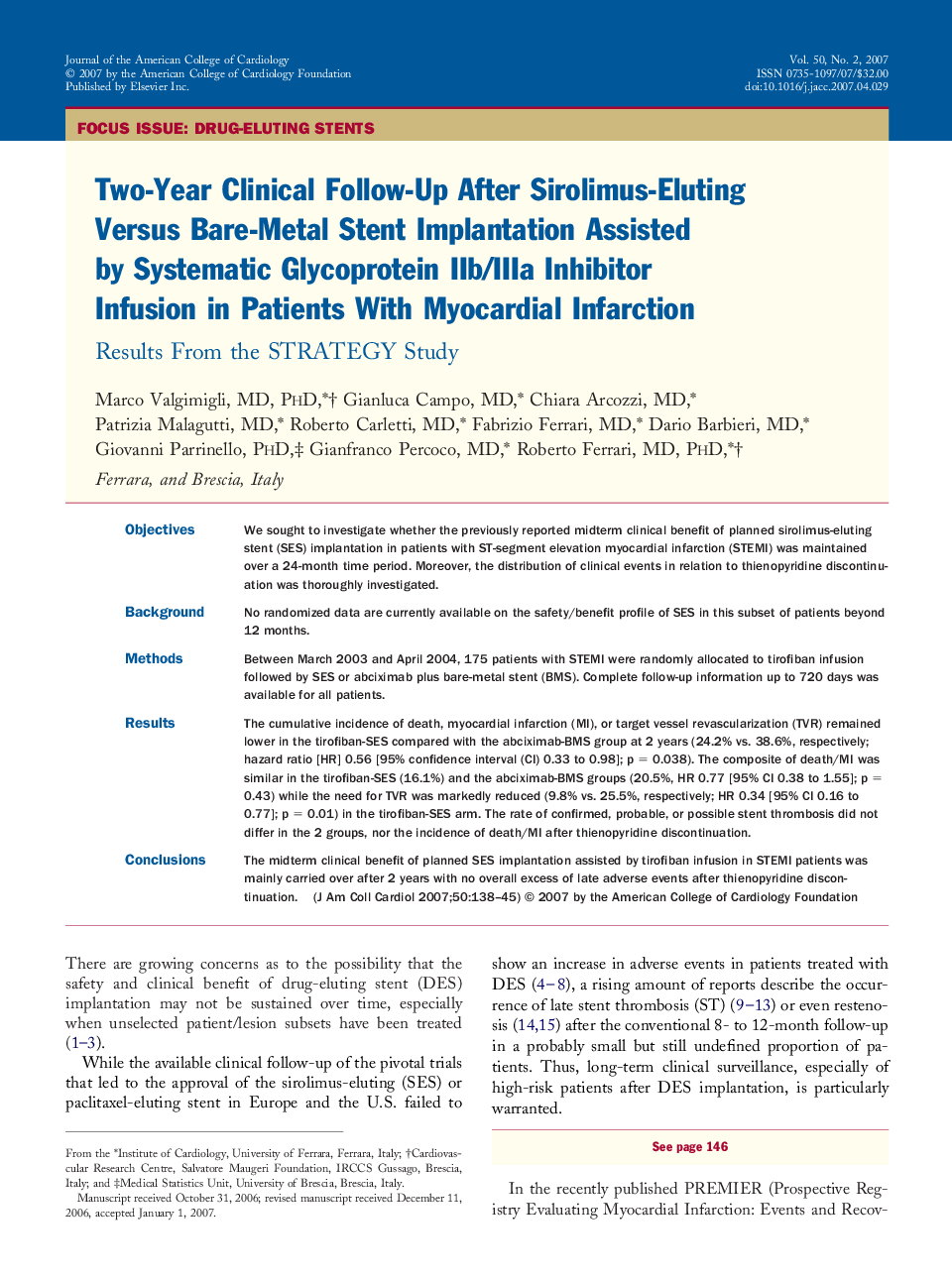| Article ID | Journal | Published Year | Pages | File Type |
|---|---|---|---|---|
| 2953443 | Journal of the American College of Cardiology | 2007 | 8 Pages |
ObjectivesWe sought to investigate whether the previously reported midterm clinical benefit of planned sirolimus-eluting stent (SES) implantation in patients with ST-segment elevation myocardial infarction (STEMI) was maintained over a 24-month time period. Moreover, the distribution of clinical events in relation to thienopyridine discontinuation was thoroughly investigated.BackgroundNo randomized data are currently available on the safety/benefit profile of SES in this subset of patients beyond 12 months.MethodsBetween March 2003 and April 2004, 175 patients with STEMI were randomly allocated to tirofiban infusion followed by SES or abciximab plus bare-metal stent (BMS). Complete follow-up information up to 720 days was available for all patients.ResultsThe cumulative incidence of death, myocardial infarction (MI), or target vessel revascularization (TVR) remained lower in the tirofiban-SES compared with the abciximab-BMS group at 2 years (24.2% vs. 38.6%, respectively; hazard ratio [HR] 0.56 [95% confidence interval (CI) 0.33 to 0.98]; p = 0.038). The composite of death/MI was similar in the tirofiban-SES (16.1%) and the abciximab-BMS groups (20.5%, HR 0.77 [95% CI 0.38 to 1.55]; p = 0.43) while the need for TVR was markedly reduced (9.8% vs. 25.5%, respectively; HR 0.34 [95% CI 0.16 to 0.77]; p = 0.01) in the tirofiban-SES arm. The rate of confirmed, probable, or possible stent thrombosis did not differ in the 2 groups, nor the incidence of death/MI after thienopyridine discontinuation.ConclusionsThe midterm clinical benefit of planned SES implantation assisted by tirofiban infusion in STEMI patients was mainly carried over after 2 years with no overall excess of late adverse events after thienopyridine discon-tinuation.
